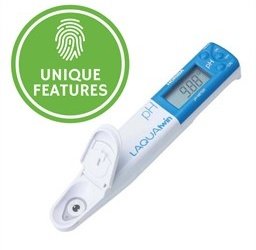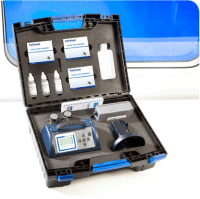How to Measure the pH of Sushi Rice using the pH22 Horiba pH Meter

Food safety is everyone's business. An essential technique that minimises food safety risks associated with sushi is to acidify sushi rice to a pH of 4.6 or less. This process acts to inhibit the growth of many harmful pathogenic bacteria that may be present.
Figure 1 Watch an Instrument Choice Scientist demonstrate how to measure the pH of sushi rice using the pH22 Horiba pH Meter here
How to Measure the pH of Sushi Rice using the pH22 Horiba pH Meter
The pH22 pH meter by Horiba can take measurements using either a rice slurry or direct sushi rice samples. Both methods are covered below. Note: Before taking measurements, turn on the device and calibrate. If you are unsure how to calibrate this meter watch the video ‘ How to Calibrate the pH22 Compact pH Meter’.
Rice Slurry pH Measurement
You will need;
- The pH22
- Distilled water
- Cooled acidified Sushi Rice
- The rice slurry shall be made up of a 50/50 mix of distilled water and acidified sushi rice. Mix ¼ cup of rice with ¼ cup of distilled water until a slurry forms.
- Open the pH22 lid and place enough of the rice slurry onto the sensor to cover it.
- Close the lid then press the ‘M’ button to start the measurement.
- You’ll know that you have obtained a stable measurement when a smiley face appears on your screen.
- Remove the rice paste from the sensor and rinse thoroughly with distilled water — repeat measurements for more precise results.
- Once you have finished using the meter, for the time being, clean the sensor with tap water and remove any excess moisture by dabbing gently with soft tissue
Direct Rice Measurement
You will need;
- The pH22
- Distilled water
- Cooled acidified Sushi Rice
- Open the pH22 sensor lid and place some freshly acidified rice onto the sensor then close the lid.
- Press the ‘M’ button to start the measurement.
- When a smiley face appears on your screen, you’ll know you have obtained a stable pH reading.
- Remove the rice paste from the sensor and rinse thoroughly with distilled water — repeat measurements for more precise results.
- Once you have finished using the meter, for the time being, clean the sensor with tap water and remove any excess moisture by dabbing gently with soft tissue
CONCLUSION
Taking pH measurements of sushi rice is critical, as well as mandatory in some states and territories, to ensure customers can enjoy a stable and safe product. Being able to both sample rice directly or make a slurry, enhances the pH22 usability and makes it great for all sushi measuring circumstances.
Additional Links
- View the pH22 Horiba pH Meter product features and specifications here.
- Watch ‘How to Measure Sushi Rice pH Using the pH22 meter.’
- Calibration is key to accurate results. Learn how to calibrate the pH22 in the video ‘How to Calibrate the pH22 Compact pH Meter’.
- For more information on the product, watch the video ‘Unbox and Setup of the pH22 Compact pH Meter’.
Also interesting
Swimming pool maintenance is essential to preventing the emergence of serious health risks to users. Because the interactions of chemicals in a swimming pool are complex, regular monitoring of key chemicals is required to ensure a safe pool environment. Chlorine levels, specifically the level of free chlorine in a pool is the most important measure for ensuring a safer swim.

The C-DSM1 Sound Level Meter enables users to take sound level measurements with ease.This meter can measure sound from 30 to 130dB, set fast or slow responses as well as utilise both A and C weightings to measure sounds within the response range of the human ear.
This sound meter packs these, and many other highly functional features into a handheld and easy-to-use sound level meter.

